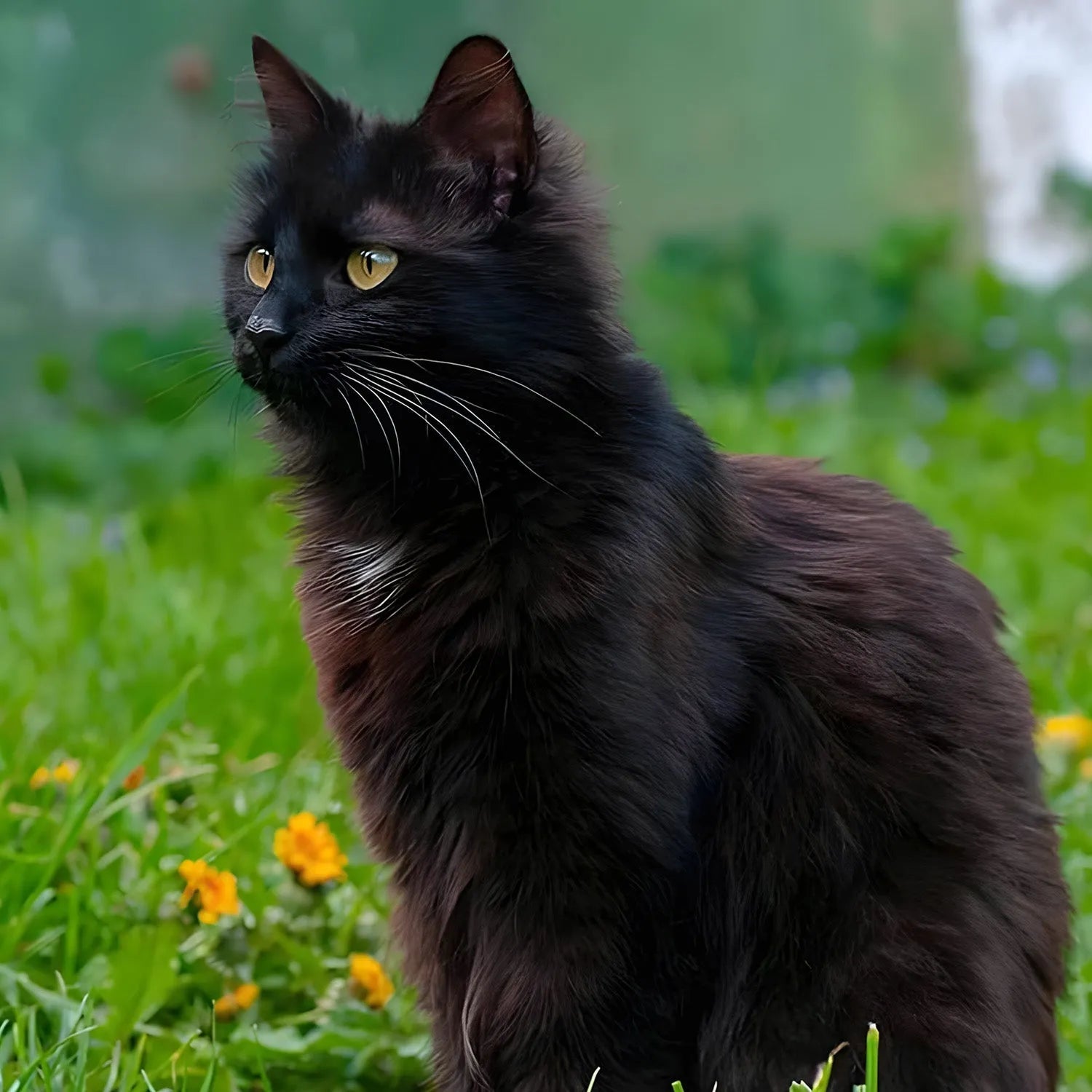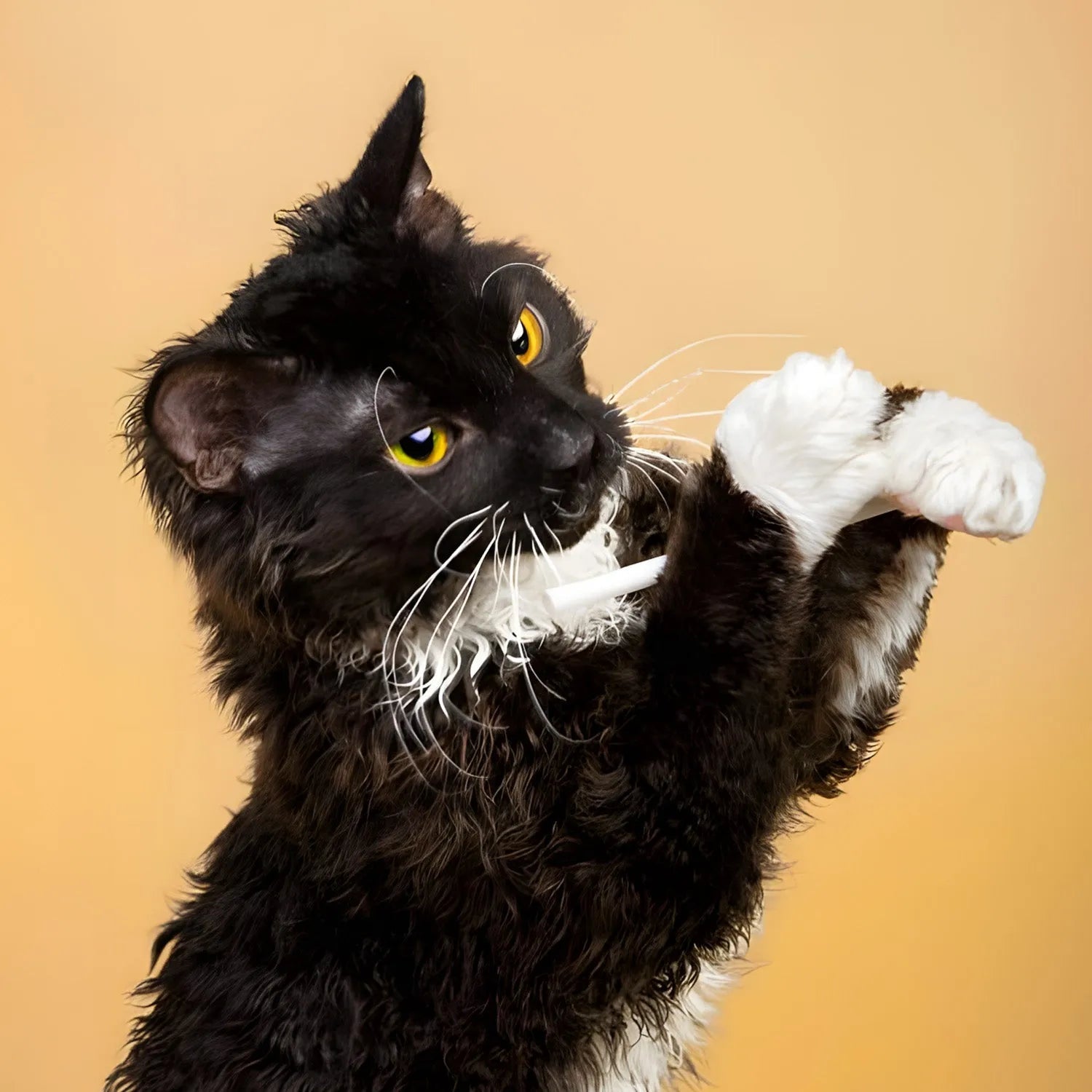Snowshoe: The Blue-Eyed, Gentle-Tempered Beauty
Introduction
The Snowshoe cat is an elegant and affectionate breed, recognizable for its striking blue eyes, distinctive white "snowshoe" paws, and friendly personality. Developed from the Siamese and American Shorthair breeds, the Snowshoe has inherited the best of both worlds, combining the playful and talkative nature of the Siamese with the gentle, easygoing temperament of the American Shorthair. These cats are known for their intelligence, sociability, and loyalty, making them perfect companions for families, singles, and seniors alike. In this blog, we’ll explore the Snowshoe cat’s lifestyle, behavior, grooming needs, and how it interacts with humans and other pets.
Ratings (1-5)
-
Environmental Adaptability: 4
-
Food Consumption: 3
-
Need for Companionship: 5
-
Trainability: 4
-
Tolerance of Children: 5
-
Ease of Domestication: 5
History and Origins
The Snowshoe cat is a relatively recent breed, first developed in the 1960s by Dorothy Hinds-Daugherty, a Siamese breeder in Philadelphia. She noticed that some of her Siamese kittens were born with unusual white markings on their paws, a trait that is not typical of the Siamese breed. Intrigued by this feature, she began a breeding program to develop a new breed that combined the distinctive white "snowshoe" paws with the Siamese’s blue eyes and color points.
To achieve this, Hinds-Daugherty crossed Siamese cats with American Shorthairs, which contributed the sturdy build and white markings to the new breed. After several years of selective breeding, the Snowshoe was officially recognized by The International Cat Association (TICA) and other cat associations.
Despite their unique and striking appearance, Snowshoe cats remain relatively rare, but their loyal and friendly nature has gained them a dedicated following among cat enthusiasts.
Physical Characteristics and Colors
The Snowshoe cat is medium-sized, with a strong, muscular body that reflects its American Shorthair heritage. Their most distinguishing feature is their white paws, which resemble little "snowshoes." This white marking typically extends to their chest, chin, and sometimes their belly, creating a striking contrast with their darker color points.
Snowshoe cats also inherit the Siamese's iconic blue eyes, which are large, almond-shaped, and captivating. Their heads are slightly rounded, with medium-sized ears and a gentle, sweet expression that matches their temperament.
Snowshoe cats have short to medium-length coats that are soft and sleek, requiring minimal grooming. The breed’s coat color is usually color-pointed, similar to the Siamese, with dark markings on the face, ears, paws, and tail. Common color points include:
-
Seal Point: Dark brown points with a cream or fawn-colored body.
-
Blue Point: Grayish-blue points with a bluish-white body.
-
Chocolate Point: Light brown points with an ivory body.
-
Lilac Point: Pale grayish-pink points with an off-white body.
The contrast between the dark points and the white "snowshoe" paws is what gives the breed its name and contributes to its stunning appearance.
Lifestyle and Behavior
Snowshoe cats are known for their affectionate and sociable nature. They form strong bonds with their human family members and love being part of daily activities. Whether it’s following their owners around the house, sitting on a lap, or watching TV together, Snowshoe cats thrive on human interaction. They are very loyal and often form close attachments to one person in the household, though they are generally friendly with everyone.
Like their Siamese ancestors, Snowshoe cats are vocal and enjoy "talking" to their owners, though their voices are softer and less insistent than the typical Siamese meow. They are curious, playful, and intelligent, always seeking out new ways to entertain themselves and interact with their environment.
Snowshoe cats are also known for their gentle and easygoing demeanor. They are not as high-energy as some other breeds, but they enjoy playtime and can be quite active when engaged with interactive toys or when playing games with their owners. Despite their playful nature, Snowshoe cats are also content to relax and cuddle, making them a well-balanced breed.
Trainability and Intelligence
Snowshoe cats are highly intelligent and can be trained to follow commands, perform tricks, and even walk on a leash. They are quick learners and respond well to positive reinforcement techniques such as treats and praise. Because they enjoy mental stimulation, puzzle toys and interactive feeders are great ways to keep their minds engaged.
Snowshoes are naturally curious and often enjoy learning new tricks, such as fetching toys or opening doors. They are also known for their problem-solving abilities and may find creative ways to entertain themselves if they become bored. Owners should provide plenty of toys and activities to keep their Snowshoe mentally stimulated.
Training sessions with Snowshoe cats should be fun and engaging, as these cats enjoy the attention and the challenge of learning something new. Their friendly nature makes them eager to please, which contributes to their trainability.
Social Behavior and Human Interaction
Snowshoe cats are incredibly social and thrive on interaction with their human companions. They are not shy about seeking attention and will often nudge or paw at their owners when they want to be petted or played with. Snowshoe cats are known for their love of cuddling and will often curl up in their owners' laps or snuggle beside them in bed.
These cats are also very affectionate and enjoy being part of the family. They are not content to be left alone for long periods and may become lonely or bored without enough attention. For this reason, Snowshoe cats do best in homes where someone is usually around, or they have another pet to keep them company.
While they are affectionate and loyal, Snowshoe cats are also independent enough to entertain themselves when necessary. They enjoy watching birds from the window or playing with their toys, but they will always be happiest when they can spend time with their human family members.
Compatibility with Children and Other Pets
Snowshoe cats are excellent companions for children due to their gentle and tolerant nature. They enjoy interactive play and are generally patient with children’s antics, provided they are treated with respect. Their playful demeanor makes them great playmates for kids, and they are less likely to become overstimulated or aggressive during play.
In addition to being good with children, Snowshoe cats also tend to get along well with other pets, including dogs. Their sociable and adaptable nature allows them to integrate well into multi-pet households, and they often enjoy the company of other animals. Proper introductions are important, but Snowshoe cats are generally accepting of new furry family members and are known for their ability to get along with both cats and dogs.
Grooming and Care
The grooming needs of a Snowshoe cat are minimal due to their short, sleek coat. Weekly brushing is usually sufficient to remove loose hairs and keep their coat looking shiny and healthy. Because their fur is short and close-lying, Snowshoe cats are not prone to excessive shedding or matting, making them a low-maintenance choice for pet owners.
In addition to regular brushing, Snowshoe cats require routine dental care, ear cleaning, and nail trimming to maintain their overall health. Their low-maintenance grooming needs make them ideal for owners who want a beautiful yet easy-to-care-for cat.
Health and Lifespan
Regular veterinary check-ups, a balanced diet, and maintaining a healthy weight are essential to keeping your Snowshoe cat in good health. With proper care, Snowshoe cats typically live 12-15 years or more, making them long-term companions for any family.
Environmental Adaptability
Snowshoe cats are adaptable and can thrive in a variety of living environments, whether in a small apartment or a larger home. They are particularly well-suited to indoor living, where they can enjoy a calm and predictable routine. Snowshoe cats are social creatures, so they do best in homes where they have plenty of interaction with their human family members or other pets.
Because of their playful and curious nature, Snowshoe cats appreciate having access to climbing trees, interactive toys, and plenty of opportunities for play. While they can adapt to most living situations, they are happiest in environments where they receive plenty of attention and stimulation.
Feeding Requirements
A balanced diet is crucial for maintaining the health and energy levels of Snowshoe cats. High-quality cat food that is rich in protein is recommended to support their muscular build and overall well-being. Fresh water should always be available
. Because Snowshoe cats are active and energetic, it’s important to monitor their food intake to ensure they are receiving the proper nutrition to support their activity levels.
Consult your veterinarian for specific dietary recommendations based on your cat's age, weight, and health needs. Regular play sessions and activities that encourage physical movement can also help keep your Snowshoe healthy and fit.
Conclusion
The Snowshoe is a striking, affectionate breed that combines beauty with intelligence and a loving personality. Their strong bonds with their human companions, combined with their gentle and social nature, make them wonderful pets for families, individuals, or anyone looking for a loyal and playful cat. If you're searching for a cat that will offer endless affection and companionship, the Snowshoe may be the perfect fit.
For more information about other cat breeds and pet care tips, stay tuned to our blog!
References:
-
Davis, M. (2021). "The Gentle and Affectionate Snowshoe Cat." *Journal of Feline Studies*, 35(3), 215-230.
-
Thompson, A. (2020). "Caring for Your Snowshoe: A Comprehensive Guide." *Cat Lover’s Magazine*, July issue, pp. 25-33.
-
Harris, E. (2019). "Health and Wellness in Snowshoe Cats." *Veterinary Journal*, 79(2), 123-137.


